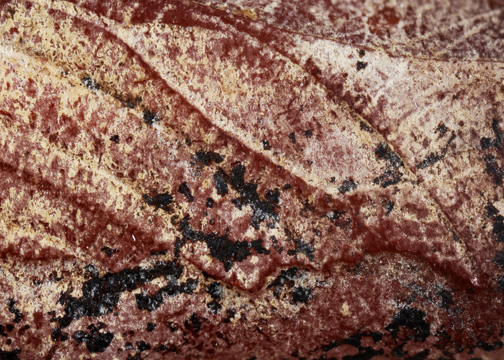Abstract
Among the calopteran damselflies, the family Epallagidae was clearly dominating the diversity of the Holarctic Cenozoic (11 described species in eight extinct genera), while the Calopterygidae were extremely rare at the same time (six Cenozoic species in two extant and one fossil genera) (Fossilworks database at http://www.fossilworks.org/cgi-bin/bridge.pl?action=home, consulted 21/10/2022). They mainly belonged to the extinct subfamily Eodichrominae Cockerell, 1923, and their most diverse genus was the early Eocene genus Labandeiraia Petrulevičius et al., 2007, known from compression fossils from the lacustrine Green River Formation (USA) and the marine Fur Formation in Denmark (Petrulevičius et al., 2007; Bechly et al., 2020).
References
Asahina, S. (1976) Descriptions of one new genus and two new species of Caliphaeinae (Calopterygidae) from Thailand with taxonomic notes on the subfamily. Kontyû, 44, 387–402.
Bechly, G. (1996) Morphologische Untersuchungen am Flügelgeäder der rezenten Libellen und deren Stammgruppenvertreter (Insecta; Pterygota; Odonata), unter besonderer Berücksichtigung der Phylogenetischen Systematik und des Grundplanes der *Odonata. Petalura Special Volume, 2, 402 pp.
Bechly, G. (2016) Phylogenetic systematics of Odonata. (Homepage on Internet site: https://bechly.lima-city.de/phylosys.htm)
Bechly, G., Garrouste, R., Aase, A., Karr, J.A., Grande, L. & Nel, A. (2020) The damselfly palaeofauna from the Eocene of Wyoming and Colorado, USA (Insecta, Odonata, Zygoptera). Papers in Palaeontology, 7, 1373–1402. https://doi.org/10.1002/spp2.1346
De Franceschi, D. & De Ploëg, G. (2003) Origine de l’ambre des faciès sparnaciens (Eocène inférieur) du Bassin de Paris: le bois de l’arbre producteur. Geodiversitas, 25, 633–647.
Münz, P.A. (1919) A venational study of the suborder Zygoptera (Odonata) with keys for the identification of genera. Memoirs of the Entomological Society (of the Academy of Natural Sciences), 3, 1–78. https://doi.org/10.5962/bhl.title.8499
Nel, A., De Ploëg, G. Menier, J.-J. & Waller, A. (2004) The French ambers: a general conspectus and the Lowermost Eocene amber deposit of Le Quesnoy in the Paris Basin. Geologica Acta, 2, 3–8.
Nel, A., Martínez-Delclòs, X., Paicheler, J.-C. & Henrotay, M. (1993) Les ‘Anisozygoptera’ fossiles. Phylogénie et classification (Odonata). Martinia Numéro Hors Série, 3, 1–311.
Petrulevičius, J.F., Nel, A., Rust, J., Bechly, G. & Kohls, D. (2007) New Paleogene Epallagidae (Insecta: Odonata) recorded in North America and Europe. Biogeographic implications. Alavesia, 1, 15–25.
Riek, E.F. & Kukalová-Peck, J. (1984) A new interpretation of dragonfly wing venation based upon Early Carboniferous fossils from Argentina (Insecta: Odonatoidea) and basic characters states in pterygote wings. Canadian Journal of Zoology, 62, 1150–1166. https://doi.org/10.1139/z84-166


